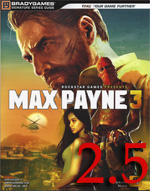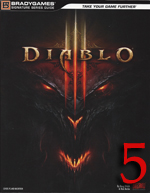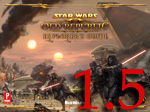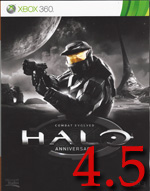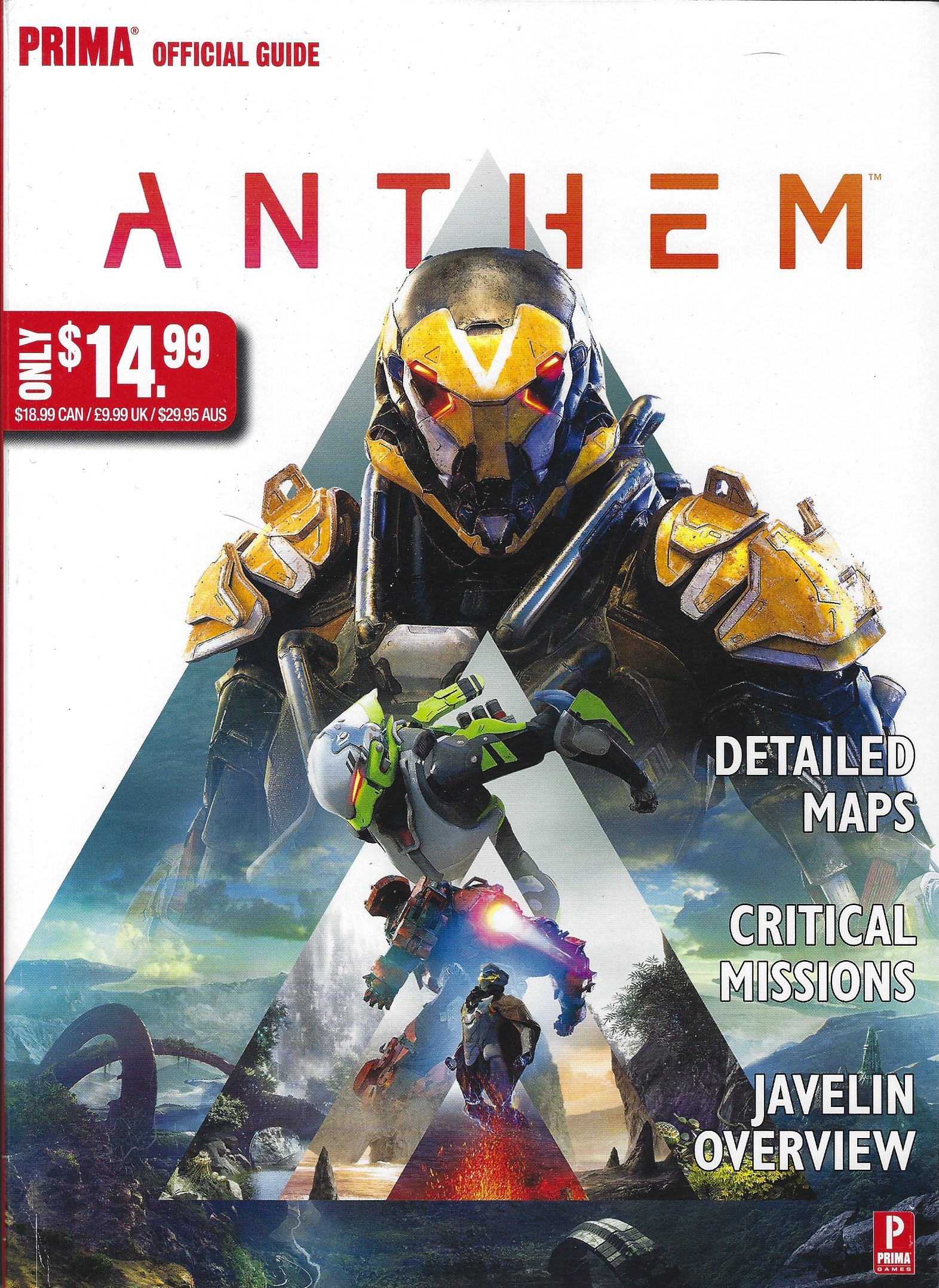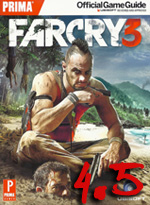 In this day and age it is legitimately rare for a AAA game to catch critics off guard. Probably the biggest exception to that rule in 2012 was Ubisoft’s late-November release, Far Cry 3. Not only did the game’s runaway success come completely out of left field, but many sites ended up considering it as a potential Game of the Year. Does Prima’s official guide live up to the same high standards, or does this open world shooter provide too many opportunities for details to slip through the editorial cracks?
In this day and age it is legitimately rare for a AAA game to catch critics off guard. Probably the biggest exception to that rule in 2012 was Ubisoft’s late-November release, Far Cry 3. Not only did the game’s runaway success come completely out of left field, but many sites ended up considering it as a potential Game of the Year. Does Prima’s official guide live up to the same high standards, or does this open world shooter provide too many opportunities for details to slip through the editorial cracks?
First-person shooters tend to be extremely straightforward and provide a rigidly scripted experience for players. For this reason the idea of a guide for a game like Call of Duty is borderline laughable. All players really need to know for this brand of shooter is the continuous progression of, “see bad dude, shoot at bad dude, turn bad dude into fleshy meat blanket, follow blood trail to next pack of bad dudes.” Far Cry 3, in a refreshing vacation from the norm, exists on the polar opposite end of this spectrum. The game features a completely open world and mission structure that leave virtually all decisions in the hands of the player. For this reason, a game guide could prove to be an indispensable way to make the most of each session in the title’s massive sandbox of destruction.
Cracking the cover unleashes a bevy of developer access special features, which demonstrates how close Prima and Ubisoft worked in the production of the guide. Those that are fascinated by the development process will be in for a treat. Included are exclusive pieces concept art, straight from the team at Ubisoft Montreal. Along with a beautiful full two page spread for each of the game’s core characters, complete with fully page portrait, is a neat feature on how the studio came about the model design of the core villain, Vaas. Though most of the information in the descriptions could be gleaned through simply playing through the campaign, it is nice to read through these sections to get a good idea as to how each person fits into the overall universe of Far Cry 3. Plus, to put it bluntly, most of the portraits are a feast for the eye. Wrapping up the “Behind the Scenes” section is a collection of concept art highlighting different aspects of the tropical sandbox’s design. Accompanying the lush visuals are quotes from several key members of the development team, further explaining the images and how they fit into the game’s all-encompassing design.
Once the far too brief peek behind the curtain comes to a close, the introduction continues into the usual nitty-gritty basics of game mechanics such as different attack techniques, methods for reconnaissance, self-healing and a litany of other topics central to the success of a player. Following the predictable approach, this section is followed by breakdowns of each weapon’s stats. Just be aware that this contains details for both the freely available and unlockable firearms, as well as the criteria for accessing the aforementioned locked artillery. After the firepower is well in hand, the hunting of wild game, powering up abilities though the skill tree and the various forms vehicular navigation are all covered in sufficient enough detail to set a player’s mind at ease.
With all of the formalities out of the way, the guide wastes no time jumping into the campaign walkthrough. Early on it is noted that each of Far Cry 3’s thirty-nine story missions are open to being completed in many different ways, but the text tends to lean more towards a more patient, stealthy approach. Under most circumstances the sneaky method mentioned in each mission write-up not only provides the player with a good way to start each section, but along with it, the reasoning WHY it is the best way to go about accomplishing an objective. The additional narrative helps support the author’s logic, and also helps teach players the best way to handle similar scenarios. Also, pay close attention to the many “TIP,” “CAUTION,” and “NOTE” call-out sections, because oftentimes these share information that might not necessarily be pertinent to the specific mission, but may help save time down the road.
There are a couple of specific elements that the entire campaign walkthrough does exceptionally well. For one, the reader isn’t ever at a loss for in-game screenshots illustrating the specific points being discussed in the text. No need for image hunting here, because the layout is extremely effective in assuring the reader never has to look any further than the text margin. Tying up the up the layout with a neat little bow is the use of larger, most likely developer provided art assets, to fill what might have otherwise be unoccupied white space. Secondly, the body of commentary finds a way to strike a fantastic balance between effectively explaining how the mission fits into the context of the entire plot, while not allowing it to muddy the instructional portion of each set piece.
Along with the straightforward storyline comes a collection of additional missions that can be completed at just about any point during a playthrough of Far Cry 3. The individual missions are organized by their objective type, which include side story missions, scoring challenges, wild game hunts, and assassinations, just to name a few. Each quest is broken down in the most straightforward manner possible, many consisting of only a paragraph or two, along with what the payout or unlockable is upon completion. Most times this is really all that is necessary in order to steer the reader in the right direction.
As is usually the case with single player focused games of this nature, the multiplayer section is practically non-existent. After a brief description of each playable character in the co-op mode, key multiplayer concepts are tentatively delved into. Features such as leveling, airdrops and the flash drives awarded post-match are all afforded a couple of paragraphs, mostly consisting of restating the obvious. The last piece of the multiplayer breakdown is spelling out the objectives of the four match types. For some reason there are no specific multiplayer maps discussed. Perhaps maps are overlooked due to the map editor that ships with the game, but regardless, the complete lack of any sort of commentary or acknowledgement of the obvious absence seems odd.
Fortunately the disappointment of the previous four pages (yes, multiplayer is only four pages long) is short lived, thanks to the massively comprehensive outpost and radio tower segment. Every single one of the game’s thirty four outposts are analyzed concisely, showing both its location on the world map, as well as sharing valuable information as to the best methods of infiltration. Additional overhead shots of the area can further help players indulge their inner Paton, even planning out their own ambitious scheme of attack. It is worth noting that squeezing two outposts per page works well for a layout most of the time. However, when a given description is overly brief there tends to be rather large sections of the page left unutilized. The radio tower section unfortunately continues using this arrangement to breakdown most of the sprawling map’s eighteen key communication locations. Much like the outposts, these points are called out on a world map, along with a location screenshot and brief commentary on the most effective approach to scaling the tower. Though the design of these cumulative pieces tend to leave quite a bit of wasted space on the page, what is contained will be more than enough to set a player well on their way towards map navigation supremacy.
And what would a thorough guide be without a collectables section to round out the book? Each of the one hundred and twenty relics are numbered on the world map, which in turn ties into their number listing in the text. To go along with a textual description of each hiding place is a screenshot to provide players with additional context of where to look in regards to all of the foliage draped surroundings. Additionally, there are twenty letters from deceased military personnel scattered throughout. These are given the same detailed treatment of the previously mentioned relics.
Writing and designing a guide for an enormous world like Far Cry 3’s must assuredly be an exhaustively time-consuming task. Fortunately the author was more than up to it. Aside from the occasional lapse in page design, the book manages to provide extremely relevant guidance to the reader, without overwhelming them with too much information. Despite being slanted towards the stealth approach, much of the direction provided is useful to any gameplay methodology. Even when considering the blatantly transparent multiplayer portion, the quality of everything else more than helps it recover brilliantly. Those looking to venture into the tropical wilds of Far Cry 3 should definitely make sure to have this tome in their pack.
SGR Rating: 4.5/5
Author: Thomas Hindmarch
Publisher: Prima Games
Editions available: Paperback
Acquired via Publisher
